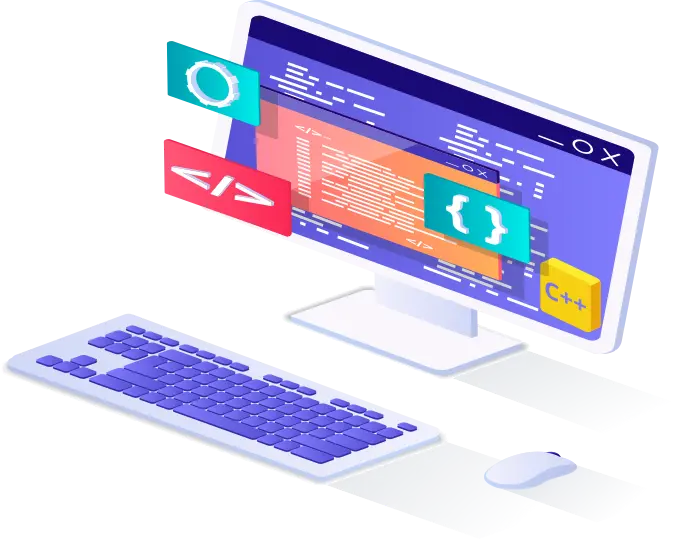Outsourcing software development advantages disadvantages
Outsourcing software development has proven to be very successful for many companies worldwide. It reduces your costs, improves your efficiency and expands your capabilities while enabling your company to focus on its core competencies.
In 2018, the global outsourcing market equaled $85.6 billion. It’s not just helpful for startups and non-tech firms. Major companies like Slack, GitHub, Alibaba, and WhatsApp, have successfully leveraged the benefits of outsourcing software development in their initial days to reach their current heights of success.
Outsourcing software development has the potential to dramatically improve your business, reduce the time to market of your application, and result in significant cost-savings.
As an investment, outsourcing software development can enhance your capabilities, increase agility and profitability, and improve your competitive advantage, but only if it is done correctly. There are significant risks involved in outsourcing development as well. These risks can cause software development projects to fail, negatively affecting your business and costing you time and money.
Crafting an effective software development outsourcing strategy
While outsourcing software development has a clear set of benefits, it can quickly turn out to be detrimental to your business goals, if it isn’t started and managed in an organized manner.
Let’s be real, finding a reliable software development company to partner with you in your development efforts can be a challenging task. The task becomes even more complex if the company outsourcing software development is not a tech company. For example, a web “design” agency that themselves outsource your software development.
Being a custom software development company that has provided outsourced software development for decades and having worked extensively with clients seeking outsourcing firms in the past, here’s a guide to outsourcing software development.
Common pitfalls in outsourcing development and how to avoid them
- Communication barriers
One of the biggest benefit of outsourcing software development, gaining access to a global pool of talent, also creates one of the major pitfalls — issues in communication. You’ll need to overcome different time zones, languages, and cultural conventions.
Do you think of India or China when you hear about software development outsourcing?
There are better alternatives. When you outsource your software development to an experienced US based software development company you avoid most of the potential pitfalls of outsourced software development, greatly improving the likelihood of your project’s success.
While English is just a language, effective communication is a skill. When communicating with outsourced software developers, comprehension of the project requirements and clarity on the deliverables are among the most important factors.
Establishing regular channels of communication with the outsourced team is crucial for ensuring your project’s success.
Use of collaboration tools, regular engagement with the remote team via video or audio communication, and meetings at regular intervals, are best practices for establishing communication channels with the outsourced software development team.
- Failure to understand the scope of the project
Before outsourcing development to a remote team, clarity on the requirements and deliverables that you expect, timeline to deliver, and overall scope of the project, are essential for successful software development outsourcing.
Failure to communicate these details may result in scope creep and misalignment of the product vision.
Scope creep (also called requirement creep, or kitchen sink syndrome) in project management refers to changes, continuous or uncontrolled growth in a project’s scope, at any point after the project begins. This can occur when the scope of a project is not properly defined, documented, or controlled. It is generally considered harmful. It is related to but distinct from feature creep, because feature creep refers to features and scope creep refers to the whole project. Both of which often results in cost overrun.
Without resolving these issues, the software developers will continue working in silos and there will be a widening gap between your expectations and the actual deliverables.
The silo mentality occurs when departments do not share information, goals, priorities and processes with other departments. The silo mentality is believed to impact operations, and may contribute to the overall failure of software development projects.
The groundwork has to be established by you and the features that you want to be built into your application need to be clearly documented.
Clarity in documentation is the first step in ensuring that your expectations and the deliverables that the outsourced software development company provides are in sync with each other.
To derive the requirements of your outsourced software development project, the software developers need to have a clear and thorough understanding of the product to be developed. This is achieved through detailed and continuous communications with the you or a company liaison and the software developers throughout the software development process.
A software requirements specification (SRS) document can be an excellent starting point that gives the software development team clear insights into the requirements.
Software requirements specification establishes the basis for an agreement between you and the outsourced software development company on how the software product should function.
All significant requirements, whether related to functionality, performance, design, or external interfaces should be acknowledged and addressed.
Used appropriately, software requirements specifications can help prevent software development project failure.
The SRS document can help you organize the essential project requirements that you want the outsourced software development team to be aware of when they start. The software development team can add further details to it, based on their knowledge of what is the most effective and efficient way to accomplish your objectives. This collaboration enables both sides to build a common plan, a shared blueprint that is established before any actual production work begins.
For non-tech companies, drafting this kind of document can seem daunting. The use of a SRS template, which we will provide for you, can help you with the documentation process and is recommend.
- Code quality challenges
There is a massive difference between software developers with decades of experience, that take great pride in their work and know how to create an effective, efficient and reliable solution to your software development challenges and the multitude of individuals calling themselves software developers.
Determining whether the outsourced software development team is adhering to the quality standards while programming your application is a challenge that becomes amplified when you work for or run a non-tech firm without significant programming expertise.
For some individuals and companies, code quality is an ambiguous term, because there are arguably no strict definitions for high quality and low-quality code.
Nexus Software Systems follows well established coding standards that help to ensure secure, reliable and performant software. When coding standards are followed, the code is consistent and can be more easily maintained.
Advantages of Following Coding Guidelines:
- Coding guidelines increase the efficiency and reliability of the software to be developed and reduces the development time.
- Coding guidelines help in detecting errors in the early phases, so it helps to reduce the extra cost incurred by the software project.
- If coding guidelines are maintained properly, then the software code has increased readability and understandability, thus reducing the complexity and enhancing the subsequent maintenance of the software.
Code quality is a collection of attributes that need to be communicated with the outsourced software development team. In our experience, good code needs to have three key qualities:
- Clarity
- Reliability
- Maintainability
Well-documented and well-tested code that follows the best practices and coding conventions of the programming language the application is being written in is crucial for long-term success and reliability.
Maintaining code quality when outsourcing software development requires communication of expectations, laying down the quality benchmarks in advance, and regular briefings with the team to stay on top of the development efforts.
The software developers that you are outsourcing to should have checks in place to ensure consistency in code quality. Before you engage an outsourced software development firm, ask if they take measures like code review (both peer-to-peer and with management), unit testing, as well as functional testing. These precautions will help ensure they have developed a robust application before releasing it to you.
An established quality assurance process with thorough application testing — including regression testing whenever any changes are made to the code and use of project management tools for logging of issues and management of backlogs — are some of the recommended basics for you to look for when choosing where to outsource your software development.
- Ambiguity of stakeholders
Lack of project ownership is one of the biggest downsides of outsourcing. If the outsourcing partner that you pick employs programmers on a contractual basis and not full time, the actual project ownership becomes clouded. Miscommunication of your project’s requirements and progress can result in inconsistency of the deliverables, because there is no project leader or consistent team who is accountable for the work and present throughout the entire process.
When outsourcing development of a software project, make sure you understand who will be working on it and try to ensure that at least some of the project managers stay consistent throughout the entire process. These are the people who you can hold accountable, and who should be present on email threads, phone calls, and other regular check-ins.
It can be very helpful to have a business analyst or project manager as a key stakeholder on the team. This person can act as a facilitator between you and the software developers, documenting the functional specifications and breaking down your application’s requirements to the software development team.
Software developers who don’t just write code but are also invested in providing a stellar experience to your customers is another asset you should look for when selecting a software development outsourcing partner.
Finding a software development company who can become potential stakeholders in your project and who are committed to creating the right solutions rather than implementing quick fixes is key to successful software outsourcing.
- Software development agreement
The age-old saying “Get it in writing” is vital in software development as well. A properly drafted software development agreement acts as a road map for the outsourced software developers to follow and safeguards you from bearing the brunt of losses in case things go wrong.
When you are ready, contact us to learn more about outsourcing your software development project.



